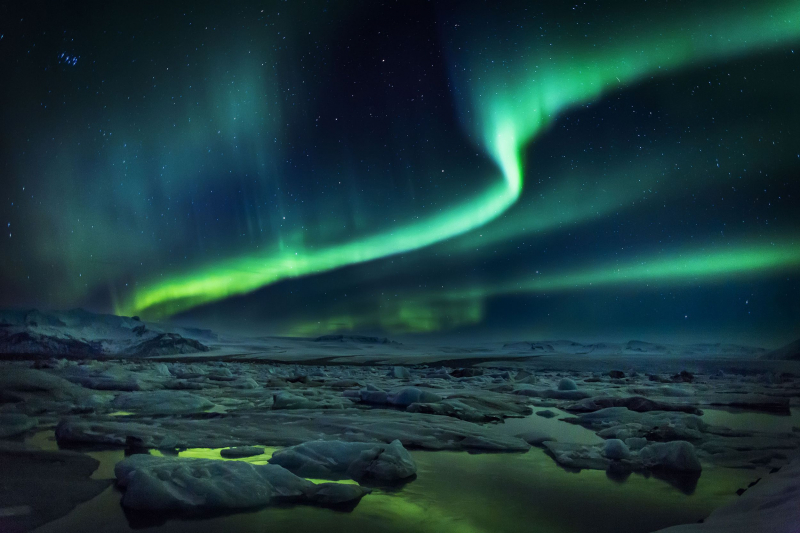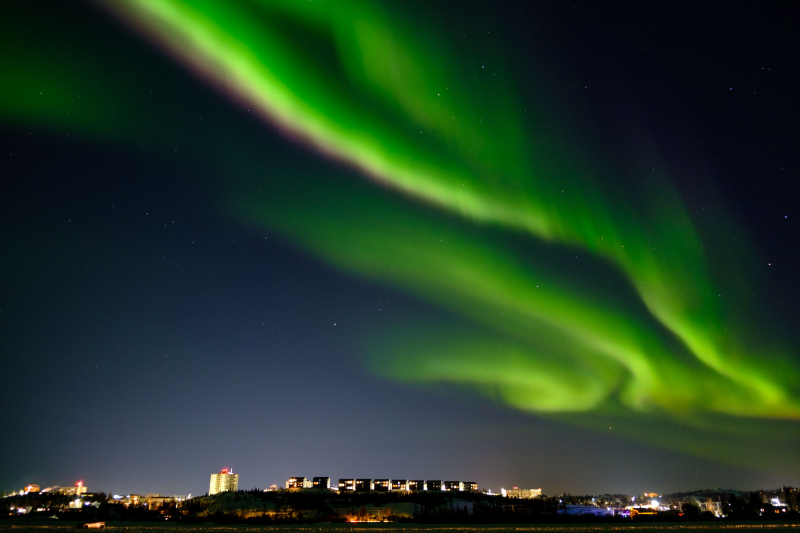Auroras
An aurora, often known as the polar lights, is a natural light display in the sky that is most commonly seen in high-latitude regions (around the Arctic and Antarctic). Aurora borealis exhibits dynamic patterns of bright lights that appear as curtains, rays, spirals, or dynamic flickers that span the entire sky. The majority of the planets in the solar system, as well as some natural satellites, brown dwarfs, and even comets, are home to auroras.
Auroras are created by disruptions in the magnetosphere caused by the solar wind. Major disturbances are caused by increases in the speed of the solar wind caused by coronal holes and coronal mass ejections. The paths of charged particles in the magnetospheric plasma are altered as a result of these disruptions. Electrons and protons, in particular, precipitate into the higher atmosphere (thermosphere/exosphere). As a result of the ionization and stimulation of atmospheric elements, the light of various colors and complexity is produced. The aurora, which occurs in bands around both polar regions, is likewise affected by the degree of acceleration imparted to the precipitating particles.







